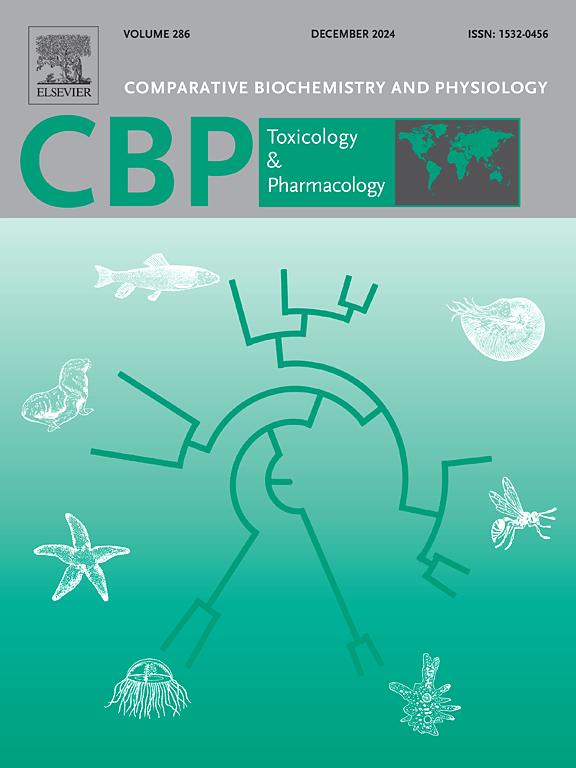Short communication: Evaluation of mitochondrial surface area of selected metals and pesticides in RTL-W1 cells: A high-content imaging approach
IF 3.9
3区 环境科学与生态学
Q2 BIOCHEMISTRY & MOLECULAR BIOLOGY
Comparative Biochemistry and Physiology C-toxicology & Pharmacology
Pub Date : 2025-02-20
DOI:10.1016/j.cbpc.2025.110148
引用次数: 0
Abstract
In recent years, there has been increasing interest in utilizing fish cell culture in vitro assays, as alternatives to whole fish assays, for assessing the toxicity of aquatic pollutants. The fish cell line RTL-W1, derived from rainbow trout (Oncorhynchus mykiss) liver, was shown to retain several tissue specific features and to respond to chemical insults similarly to fish in vivo. In our study, we investigated the toxicity of two metals silver and cadmium and two pesticides azoxystrobin and paraquat using a cytotoxicity assay that measures simultaneously cell metabolic activity and cell membrane integrity. Moreover, we developed a novel ‘high-content imaging’ approach to evaluate if mitochondria's surface area is a sensitive and specific indicator of mitochondria toxicity. Initially, the cytotoxicity assay was used to determine the chemicals' effective concentrations (EC50). Subsequently, we assessed the mitochondria surface area at different toxicity level (i.e., EC50, EC25 and EC10) to compare the sensitivity and specificity of this method. The EC50s measured by cell metabolic activity, for silver, cadmium, azoxystrobin and paraquat were 0.71, 29.05, 2.34 and 1260 μM, respectively. Mitochondria surface area was reduced by all chemicals at the EC50, and by silver and azoxystrobin at the EC10 and EC25; indicating that the latter chemicals affect mitochondria more specifically. In conclusion, our study demonstrated that mitochondrial surface area serves as a sensitive marker for chemicals inducing mitochondria toxicity in fish liver cells. Additionally, assays using RTL-W1 cells proved to be effective for detecting the hepatic cytotoxicity of environmental contaminants.

求助全文
约1分钟内获得全文
求助全文
来源期刊
CiteScore
7.50
自引率
5.10%
发文量
206
审稿时长
30 days
期刊介绍:
Part C: Toxicology and Pharmacology. This journal is concerned with chemical and drug action at different levels of organization, biotransformation of xenobiotics, mechanisms of toxicity, including reactive oxygen species and carcinogenesis, endocrine disruptors, natural products chemistry, and signal transduction with a molecular approach to these fields.

 求助内容:
求助内容: 应助结果提醒方式:
应助结果提醒方式:


